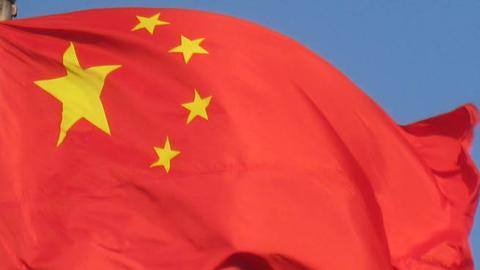Introduction
In April 2017, Japan’s Ministry of Foreign Affairs released its “Free and Open IndoPacific Strategy”1 (MoFA Strategy). This describes how Tokyo will broaden its worldview and strategic role under the Shinzo Abe era defined by the desire to make a “proactive contribution to peace” on the back of the reinterpretation of the Japanese constitution to allow the use of its Self Defence Forces for “collective security” actions.
Some seven months later in November 2017, Australia released its 2017 Foreign Policy White Paper (FPWP),2 the first comprehensive blueprint to guide Australia’s foreign engagement since 2003. In it, the promotion, strengthening and defence of “an open, inclusive and prosperous Indo-Pacific region” was identified as the highest priority for the country’s foreign policy in the decade ahead.
Then in December 2017, the White House released the National Security Strategy of the United States of America (NSS). In a document which represented the first comprehensive articulation of foreign policy objectives to be pursued by the Donald Trump administration, the NSS promised that the U.S. would “respond to the growing political, economic, and military competitions we face around the world”. This included “preserving peace through strength” and “advancing American influence” to promote “a world which supports American interests and reflects [America’s] values”.3
In placing the NSS in a regional context, the document argues that “A geopolitical competition between free and repressive visions of world order is taking place in the Indo-Pacific region.” The strategic response is to “redouble our commitment to established alliances and partnerships, while expanding and deepening relationships with new partners that share respect for sovereignty, fair and reciprocal trade, and the rule of law”.
These three pivotal documents are different in style and emphasis with the MoFA Strategy being the least forwardleaning and the NSS the most. Even so, all three documents are remarkably well aligned in terminology, principles, objectives and means, even if Japanese documents tend not to be as explicit about the intensifying strategic competition with China. At the heart of all three approaches is the concept of a Free and Open Indo-Pacific (FOIP) which reaffirms the security and economic rulesbased order which has existed since after the Second World War — especially as it relates to freedom of the regional and global commons such as sea, air and cyberspace, and of the way nations conduct their economic affairs.
In the authors’ conversations with politicians, officials and policy experts 1-2 years ago (especially in the US) there was strong confidence that the FOIP would gain strong buy-in from Southeast Asian states. As many interlocutors argued, China has constructed seven artificial islands in the South China Sea and steadily expanded its military assets on these features in a highly contested maritime area. Beijing continues to build military buildings, port facilities, radar and sensor installations, hardened shelters for missiles brought to these artificial islands and built airstrips and aircraft hangers. It has built significant storage facilities for fuel, water and ammunition. To entrench its de facto control over contested areas, Beijing has pressured other states to suspend exploitation of natural resources within their own exclusive economic zones, including by threatening economic punishment. All this is occurring despite previous promises not to militarise the artificial features and the handing down of a binding arbitration award by the Permanent Court of Arbitration which largely invalidates the legal claims China has made to most parts of the South China Sea.
Moreover, it was considered by many of these interlocutors that the highest and most enduring strategic priority for the small and/or vulnerable maritime Southeast Asian states (which includes the countries covered in this report: the Philippines, Vietnam, Thailand, Singapore, Malaysia and Indonesia) was to avoid being dominated by another great regional great power. The FOIP offered a vision of enhanced and entrenched sovereignty for large and small states against domination and coercion in contrast to Beijing’s unspecified but seemingly Sino-centric vision of order in Asia.
Additionally, the FOIP expands the geostrategic scope to include the Indian Ocean. Most notably this brings the potential great power of India into greater strategic play, increasing the balancing options for all nations wary of Chinese dominance and coercion.
Finally, the FOIP is a complementary framework to the alliance and defence relationships between the US and allies and partners. It is also a complementary framework for closer defence relationships between Southeast Asian powers, and between Southeast Asian states and regional countries such as Australia and Japan. It was thought that these denser security networks will help in keeping the US fully engaged in the region and make it more difficult for China to challenge or alter the preferred strategic status quo for the six Southeast Asian states.
The record over the past couple of years has been disappointing for those hoping there would be a more unified and robust response to Chinese strategic and defence activities and policies emanating from Southeast Asia. On the one hand, Southeast Asian capitals all broadly welcome the US and allied military presence as a balancing and constraining factor against the prospect of Chinese dominance. The defence-todefence relationships with the US remain as strong and productive as in the previous decade and all welcome closer strategic and defence ties with US allies such as Japan and Australia. In September 2019, Singapore and the US renewed the 1990 Memorandum of Understanding regarding United States Use of Facilities in Singapore (which allows the US to use Singaporean air and naval bases) for a further 15 years. In conversations with officials and services from the Philippines and Thailand, views on the role of US and Australian defence forces and cooperation with the latter are overwhelmingly warm and positive.
On the other hand, any hoped for overt ‘pushback’ by Southeast Asian nations (individually and collectively) has been modest if not disappointing. Southeast Asian nations remain silent on the importance and legally binding nature of the PCA Award in the face of continued and flagrant Chinese violation of those principles and laws. Instead, the ASEAN states have been co-opted by China in taking the focus away from UNCLOS principles and international law and instead concentrate on the completion of a China-ASEAN Code of Conduct (CoC) which is neither binding nor places any significant restraint on Chinese actions. Even then, China’s de facto seizure and consolidation of contested areas in the South China Sea is occurring as negotiations on a CoC drag on.
Since the PCA Award was delivered in July 2016, Southeast Asian states and ASEAN barely publicly mention the Award, the importance of international law more broadly, or China’s violation of legal and normative principles occurring in their own maritime backyard. To be fair, the decision of the then incoming Rodrigo Duterte government to play down the significance of the Award (largely on the basis that American security guarantees for the Philippines were inadequate and unreliable) decreased incentives for other Southeast Asian states to emphasise the importance of UNCLOS. Nevertheless, there is little public support given to American, Australian or Japanese actions that reaffirm the legal right of free passage and overflight even if officials from all these countries admit privately that they approve of US and allied efforts to maintain these freedoms.
Whereas there were criticisms of the Barack Obama administration that it showed inadequate resolve against China, there are now widespreadSoutheast Asian apprehensions that the Donald Trump administration is taking too confrontational an approach to China and becoming too eager to force Southeast Asian nations to ‘choose’ between the US and China. While some of the Southeast Asian criticisms of decisions taken by the Trump administration (such as its withdrawal from the Trans-Pacific Partnership and the political neglect of diplomacy in the region at the highest levels) is understandable, the deliberately nonconfrontational policies adopted by Southeast Asian states even preceding the Trump administration has undoubtedly provided diplomatic cover for China to extend its reach and presence in the region.4
With respect to the FOIP, the early response of Southeast Asian states ranged from ‘agnostic’5 to ‘silent’.6 Vietnam, Singapore, Indonesia and perhaps Thailand were not inherently opposed to the focus on the Indo-Pacific but had reservations about openly juxtaposing a ‘Free and Open IndoPacific’ to a Chinese alternate view of order. Of these countries, Indonesia and possibly Vietnam appeared the most supportive but only under the condition that the concept enhanced ASEAN’s role and standing. Malaysia and the Philippines remained largely silent. Most were suspicious that the FOIP led surreptitiously to renewed emphasis on a revised Quad grouping and that the US, Japan and Australia were preparing to welcome India into the strategic mix with decreased emphasis on, and relevance for, ASEAN.
The point is that contrary to especially US expectations, the Southeast Asian countries embrace of the FOIP as a counter-dominance approach to China has been underwhelming despite increasing concerns with the latter’s policies and behaviour and strong individual support for the American naval presence in the region. Even as China has extended its militarisation and hold of artificial islands, collective criticism of Beijing’s policies has been moderated since the PCA Award was released in 2016. Individual criticism of China by Southeast Asian nations is infrequent. This is occurring even though Chinese, and not American, policies present the greater challenge and disruption to the preferred order and status quo of these Southeast Asian nations.
This report arises out of the above observations. How is China attempting to build support for, or else increase acceptance of its policies in Southeast Asia, especially in the South China Sea? If such support is not forthcoming, how does Beijing seek to overcome opposition to these policies or at least neutralise or sideline those entities and individuals who might disagree?
It is in this context that the authors have analysed and discussed (with over 100 Southeast Asian, American, Japanese, Taiwanese and Australian interlocutors):
- The strategy and approach behind Chinese non-military activities to advance its strategic and military objectives in six maritime Southeast Asian nations: the Philippines, Vietnam, Thailand, Singapore, Malaysia and Indonesia;
- How successful that strategy or approach has been;
- Why are frameworks such as the FOIP less popular or successful in terms of Southeast Asian buy-in than previously expected; and
- What recommendations can be made on how Australia might respond?
The report is the result of the authors’ own research and analysis informed and sharpened by the insights gained from these interactions (and not simply the reproduction of various conversations pieced together).














